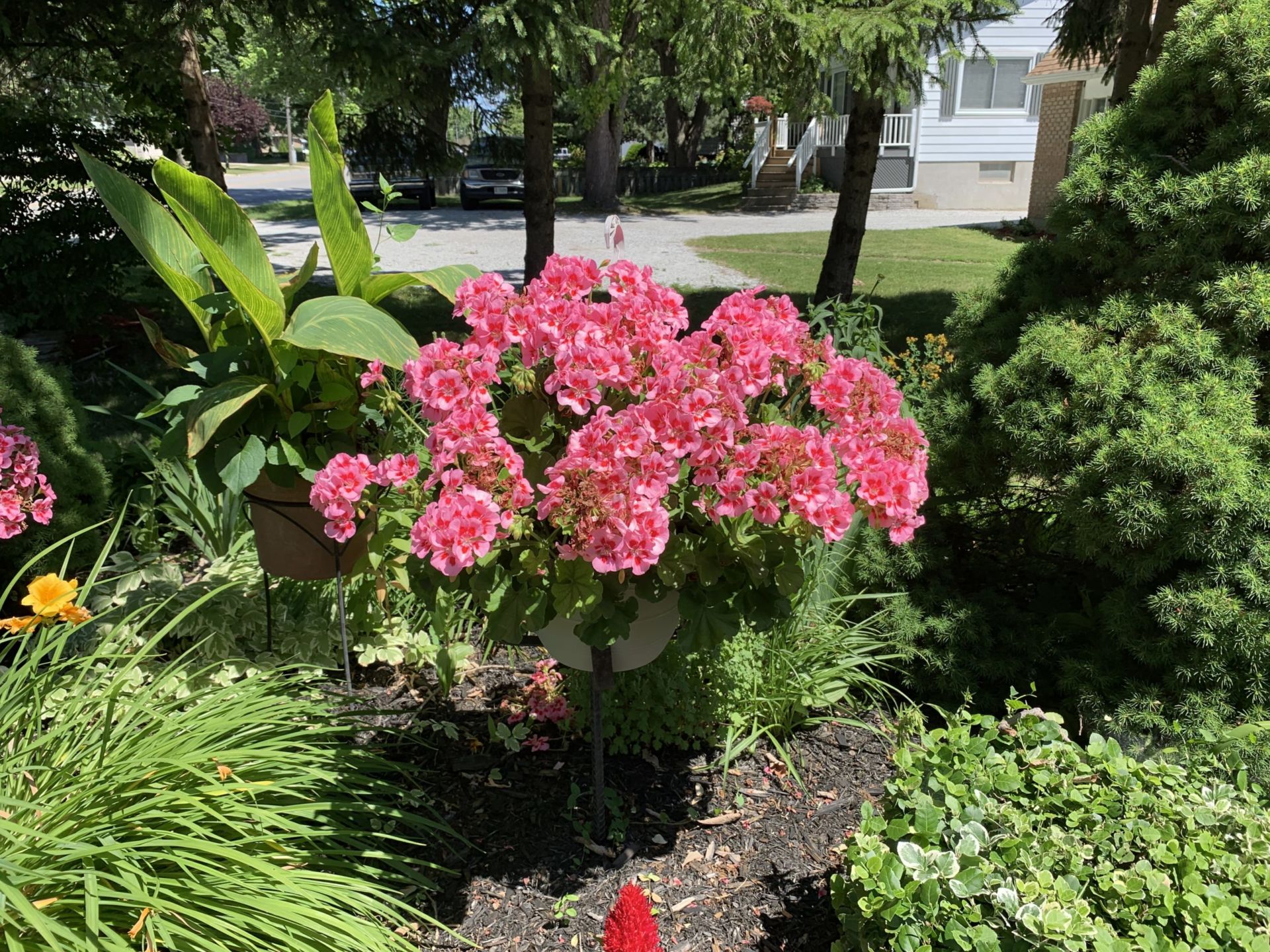Geraniums
Garden Clippings for July 20, 2019
What goes around, comes around. Twenty-five years ago, the Geranium began its downward spiral. They were expensive, boring and high maintenance. And while they were bold and colourful, their blooms were not terribly interesting.
Today, Geraniums are enjoying a powerful comeback. Turns out Grandma was smart when she planted her Geraniums. We now know that Geraniums are dependable, easy to grow and pack a powerful punch.
Gardening critics still condemn Geraniums because they require deadheading. Truth is, if every two weeks you went out and cut off 4 or 5 spent flowers, your Geranium will thrive and perform like no other annual flower.
Geraniums are hardy, sun loving, and reasonably drought tolerant. They grow equally well in containers as they do in the garden bed. Their showy globe shaped blooms, about 4 to 5 inches in diameter, are bright red, pink and white.
When planting Geraniums in containers, use soil-less growing medium that drains well. The container should have drainage holes to allow excess water to escape. If Geraniums get too much water, they will notify you by turning their leaves slightly purplish and smaller in size.
Through summer, Geraniums want to be watered thoroughly and allowed to dry between watering. Like most annual flowering plants, Geraniums should be watered daily if in a small pot or hanging basket. For larger pots, water every other day. Geraniums in garden beds will probably be fine if they get water once a week.
Geraniums are heavy feeders and enjoy an application of water-soluble fertilizer every two weeks. I recommend supplementing liquid fertilizer with granular slow release fertilizer applied early in spring and again in July or August.
Die-hard Geranium lovers know that Geraniums are steadfast. When other annual flowers look tired in mid-summer, Geraniums don’t skip a beat. Best of all, when nights become cool and temperature dip below the freeze point, Geraniums still look great. They are the only annual flower that still looks good after Halloween.
Geraniums are incorrectly named. Their botanical name is Pelargonium and the name Geranium actually belongs to a family of perennial plants sometimes called Cranesbill.
Frugal gardeners appreciate Geraniums because they are easy to overwinter. At the end of the growing season, use a scissors or shear to cut the plant back to 8 or 10 inches high. Dig up the plant and cut back some of the roots as well. Transplant the plant in a smallish pot that will tightly accommodate the root ball. Water well initially, then water as infrequently as possible. When spring arrives put the plant outside again after danger of frost is past.


